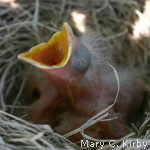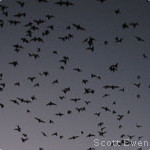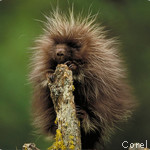We have much more to do and your continued support is needed now more than ever.
6 Common Nature Myths — Debunked
Head outside with kids and you’ll probably find yourself tempted to share advice bestowed on you when you were small. But have you ever wondered if the “wisdom” passed down by your elders is actually correct?
The best intentions don’t necessarily hold up to rigorous fact-checking. Here are some of the most common myths that you’ve almost certainly heard—but shouldn’t believe!
 Myth 1: Never put a baby bird back in its nest. The parents will smell your scent and abandon the chick.
Myth 1: Never put a baby bird back in its nest. The parents will smell your scent and abandon the chick.
Nope, they won’t! While it’s usually best not to disturb wildlife, this reasoning is hogwash. Most birds have a very poor sense of smell. If a nestling has fallen and you can reach the nest easily, it’s fine to put the baby back in. However, young birds that have already left the nest often hang out on the ground before they can fly well. Check to see if the chick has its feathers. If so, it’s a fledgling, and you don’t need to do anything. Most likely the parents are nearby, keeping an eye out and bringing food.
Myth 2: Don’t touch a toad—you’ll get warts!
Totally false. A toad can’t give you warts. Though its skin may look warty, it has nothing to do with the virus that causes warts in humans. So it’s perfectly safe to gently touch a toad.
You can attract toads to your outdoor space by providing the proper shelter. Find out how to make a toad house!

Myth 3: Always wait an hour after eating to swim.
Although there’s nothing wrong with a bit of post-meal quiet time before the splashing starts up again, there’s absolutely no evidence that debilitating stomach cramps will set in if you dip a toe in the water before 60 minutes have passed. Just think how many hours of swimming you missed out on as a kid if your parents enforced this rule! Of course, caution around water is always a good idea—so if you need a break from watching your little swimmer, by all means call a time out!

Myth 4: Look out if you see a bat swooping close – it could get tangled in your hair.
Bats use echolocation to navigate in the dark. Here’s how it works: Bats emit high-pitched squeaks that bounce off objects and return to their sensitive ears, providing them with a clear picture of their surroundings. A bat can pinpoint something as small as a mosquito or a moth from high above, so you can be sure it knows exactly where you are—and has no desire to get close enough to get stuck in your hair.
 Myth 5: Porcupines will shoot their quills at you if you get too close.
Myth 5: Porcupines will shoot their quills at you if you get too close.
Porcupines do indeed use their sharp quills for defense. But the quills only release from the porcupine’s skin when contact is made with another animal. The porcupine can’t launch them through the air like missiles. So do avoid a close encounter with a porkie, but don’t be afraid to observe one from a short distance away.
 Myth 6: Moss always grows on the north side of tree trunks. It’s a good way to find your way through the woods.
Myth 6: Moss always grows on the north side of tree trunks. It’s a good way to find your way through the woods.
It’s true that moss grows on the north side of tree trunks and rocks. But it also grows on the south, east, and west sides, too! Moss tends to grow where conditions are cool and moist. This is often the case on the north side, which tends to be more protected from direct sunlight. But in the woods all sides are likely to be shaded, so this clue isn’t reliable. Take a compass or a GPS device instead!
Kids can also practice finding their way with these make-your-own-trail games.
Armed with these facts, you’re now ready to head outside and share some good advice with the next generation!
Kate Hofmann is a writer/editor for National Wildlife Federation’s Ranger Rick magazine and Eco-Schools USA program. She has a master’s degree in environmental education and loves to help kids, families, and teachers discover the beauty and benefits of time outside. A native of northern Michigan, she is surrounded by water and can often be found exploring the shores of the Great Lakes.





















